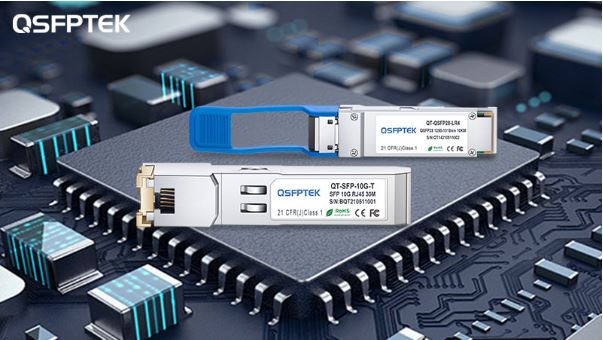The Ultimate Guide to Copper Cabling & SFP+ 10G-T
Introduction: What are the Differences Between Copper Cabling & SFP Fiber Optics?
Copper cabling and fiber optics are two different types of cables that use different technologies.
Copper cabling is made up of copper wires and they are the most common type of cable. They are cheaper than fiber optics and they have higher bandwidth. Copper cables can be used in short distances, such as 10 meters, but they have a limit to how much data they can carry. This limit is called the maximum distance reachable.
Fiber optics use light to transmit data and information over long distances through glass or plastic fibers. Fiber optic cables are thinner than copper cables, which makes them easier to install in tight spaces. They also have better noise immunity because light doesn’t travel well over long distances when it’s interrupted by other waves or particles. Fiber optic cables also offer higher bandwidths. Copper cables are useful in places where the cable runs are short and there’s not a lot of data being transmitted. Fiber optic cables are more expensive but they can transmit much more data over long distances and have increased security because they’re not susceptible to electromagnetic interference.
What is SFP-10G-T 10GBASE-T copper transceiver?
The SFP-10G-T 10GBASE-T copper transceiver is a high performance, reliable and cost effective 10 Gigabit Ethernet copper module.
The SFP-10G-T 10GBASE-T copper transceiver provides a cost effective means to connect network devices such as switches and routers to the network backbone. The SFP+ RJ45 connector provides an easy way to connect the module to an optical fiber cable, while the SFP form factor enables it to be mounted in a standard 19 inch rack. The device is typically used in data centers, where it provides high bandwidth connections between servers.
Copper Cable vs. Fiber Optic Cables – Which Should I Choose for My IT Building Needs?
Copper cables are the most common type of cable used in data centers. They provide a stable connection and are relatively inexpensive. However, they have some disadvantages as well. Copper cables can only handle up to 10 gigabytes per second, which is not enough for high-speed connections.
Fiber optic cables provide a much faster connection than copper cables and they can transmit data at speeds of up to 800 gigabytes per second.
The downside of fiber optic cable is that it’s more expensive than copper cable and it doesn’t work well with electrical interference from power lines or other sources.
The most important point is that the material of the copper cable determines that it can be powered. For the monitoring system, a category cable can achieve two functions of data transmission and power supply, which is very efficient. Fiber optics can never transmit electricity.
The application of sfp-10g-t rj45 transceiver
The SFP-10g-T modules are used for 10 Gigabit Ethernet applications. SFP+ provides a high speed, low latency connection between two devices. The application of SFP+ modules is mainly in the top of rack (TOR) switches. They provide high-speed data transmission between servers and storage devices.
